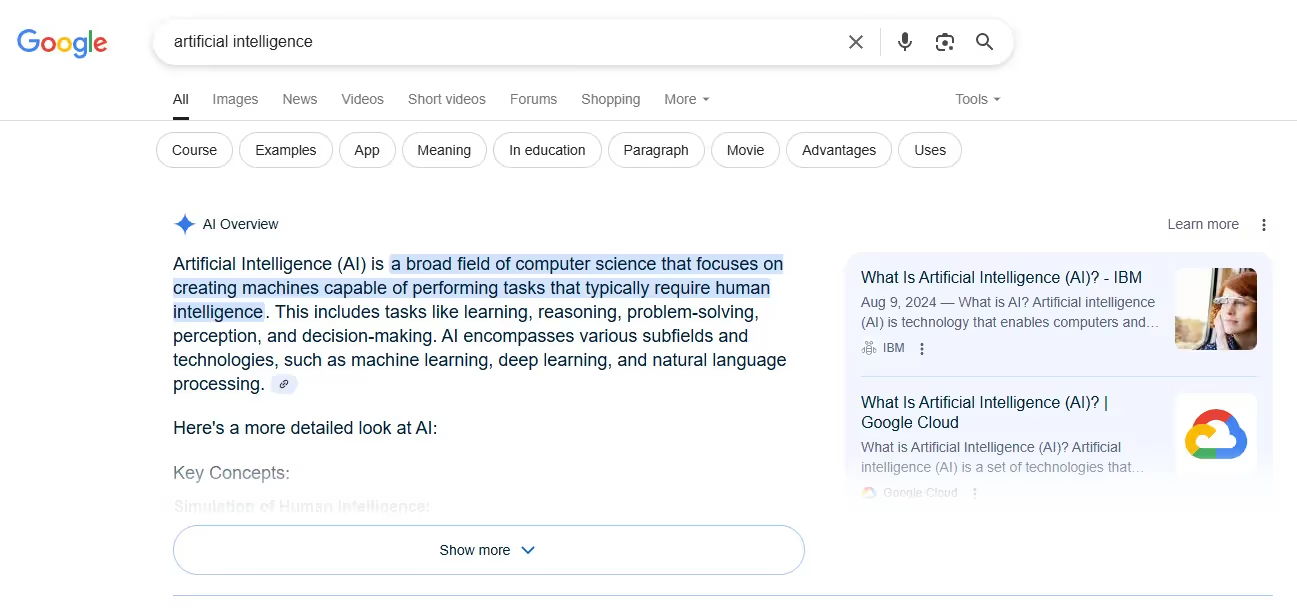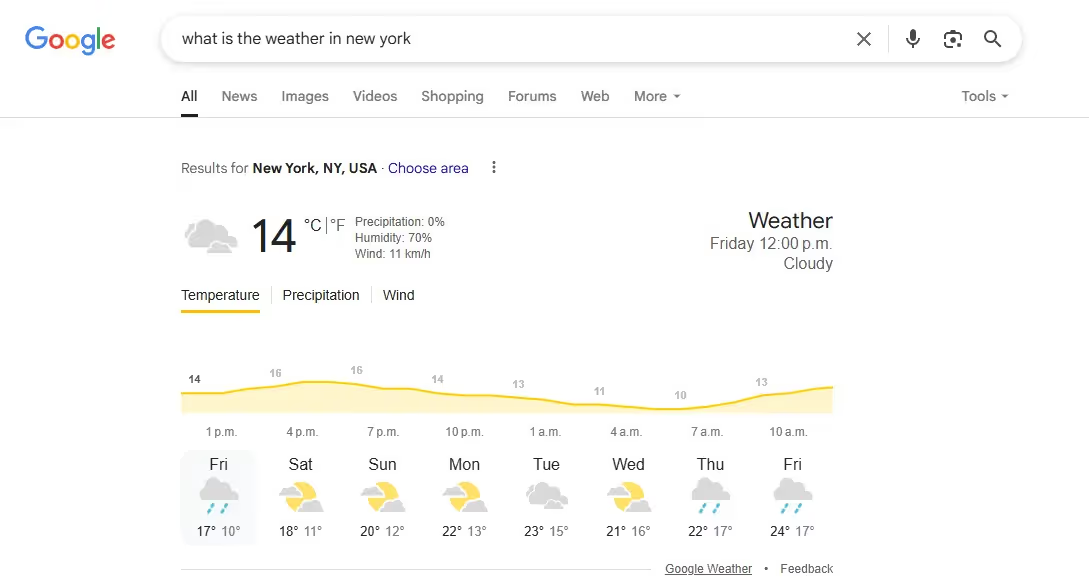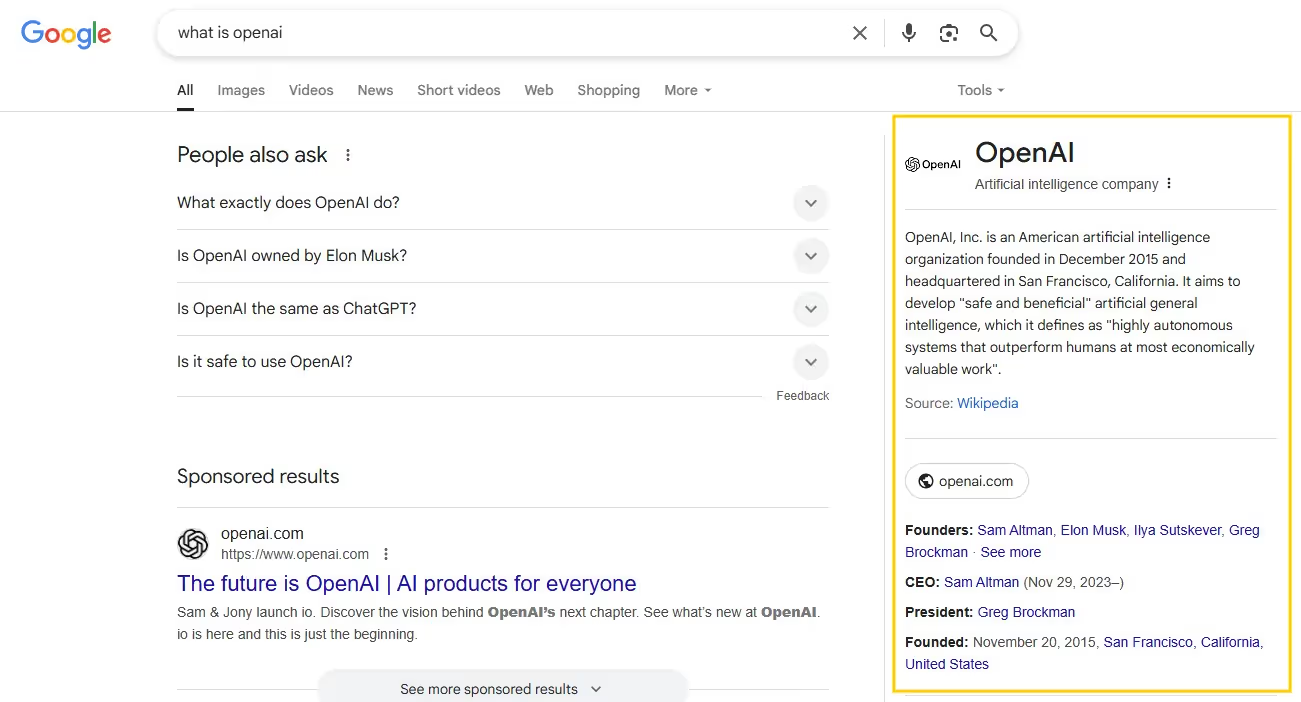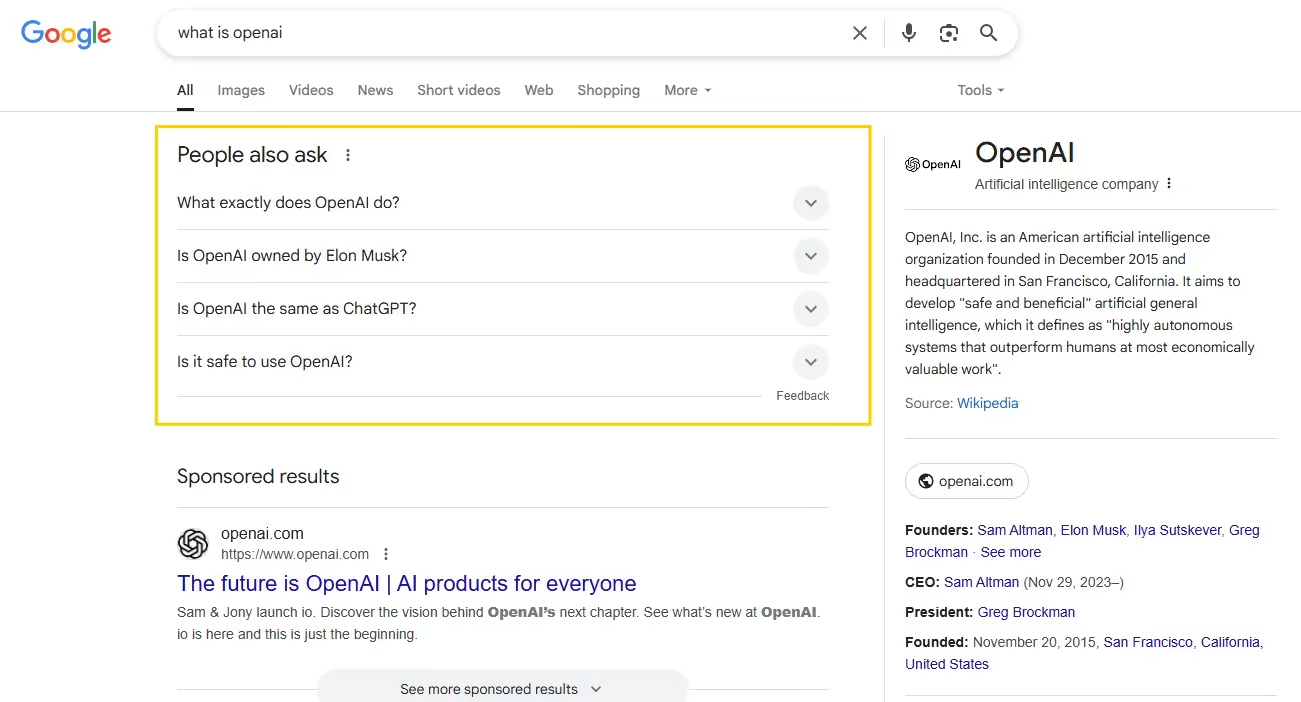If you’ve ever received an instant answer to your internet query right at the top of the first search engine results page (SERP) without needing to click to a website, you’ve experienced a zero-click search. Essentially, it took zero clicks to find what you were looking for.
Zero-click searches are becoming increasingly common, in part because of Google’s expanded rollout of AI Overviews.
In Google’s Q1 2025 earnings report, CEO Sundar Pichai announced that the AI Overview had over 1.5 billion users monthly.
According to several sources, zero-click searches are on the rise, accounting for up to 60% of all search results (as of 2024), as reported by Search Engine Land, delivering answers that, in many cases, stop web traffic from reaching the online publishers that helped provide the content in the first place.
Zero-click searches take several forms. Here, we’ll explore eight common types of zero-click results that provide the user with additional valuable information directly on the SERP without requiring a click to another website.
Get a patented toolkit to elevate your editorial process with the Originality.ai Content Optimizer, AI Checker, and Plagiarism Checker.
AI Overviews use artificial intelligence to aggregate published web content from multiple sources and synthesize it into comprehensive, conversational answers that appear at the top of search results.

This SERP feature provides users with factual answers, detailed explanations, and further context, often including citations to its source material. A preview and link to one or more related websites often appear to the right of the AI Overview.
Featured snippets are the boxed answers appearing at the top of Google organic search results on the SERP.
In Google’s quick guide on featured snippets, they highlight how featured snippets appear for queries such as “why is the sky blue.” So we replicated that search below:

Example of a featured snippet in Google search results
They are extracts of key information from web pages that concisely and directly answer the specific user query.
While some snippets may draw a user to click on the featured website, certain types of answers in the snippet result in a zero-click search, such as:
Direct answer boxes provide immediate responses to simple factual queries or generate requested real-time data.
These responses are directly integrated into the SERP without linking to a specific source. Instead, Google provides the answer, without a direct link or additional context, to things like:

Example of a zero-click search for a weather-related query in Google search results
Direct answer boxes are all about utility. The user needs a quick, direct answer, and Google provides it without directing traffic toward a website with the answer.
Knowledge panels appear on the right side of the search results and are designed to display additional or complementary facts related to user or search intent, such as comprehensive information about people, places, businesses, or closely connected topics.

Example of a knowledge panel for the search “what is openai”
The information is usually directly related to the search query when the search terms are clear and direct. This additional feature can display what the user seeks without the visitor ever needing to leave the SERP.
You’ll notice in the above example that another type of zero-click search appears — the expandable “People Also Ask” accordion on the search results page.

Example of a People Also Ask result for the search query “what is openai”
This displays related queries that other users commonly search for on related topics. When users click on a question, a brief answer is revealed.
By clicking through the PAA on the SERP, a user can go from question to question and find additional information about their intended topic without making a single click outside of Google’s ecosystem.
When a query is related to a product or product name, Google displays shopping results directly on the SERP, including images, ratings, prices, consumer ratings, and retailer details.
Shopping results may appear in an image carousel or a grid, displaying multiple options from different retailers.
Users can compare products, prices and review results without visiting the individual e-commerce sites. This SERP feature provides convenience for the consumer.
Rich results enhance standard search listings with additional features like star ratings, recipe details, event information, or FAQ sections.
While featured snippets appear at the top of the search results, rich results can appear anywhere within the results.
To appear in rich results, a website developer intentionally adds structured data to their pages so Google can recognize it and display it more attractively in search results.
While this feature may eventually inspire a user to click through to the website, the additional information that enriches the snippet might be enough to answer the question without the user ever leaving the SERP.
Local pack results appear for location-based queries, displaying a Google map alongside local business listings with essential contact information, hours, and Google ratings.
While helpful for mobile users looking for quick, localized answers, local pack results allow many users to view key details, get directions, see photos, and read user reviews about the business without ever visiting the business’s website.
Google’s algorithms have been evolving over time to crawl the internet and bring users the answers they need as directly as possible.
Increasingly, Google has moved toward directly answering a user’s need right on the SERP or a Google-owned property and keeping them on their platform longer, which is what we’re continuing to see with the many different types of zero-click searches.
Looking to optimize your content? Check out the Originality.ai Content Optimizer to drive predictably better rankings.
Then, learn more about SEO and content marketing:
